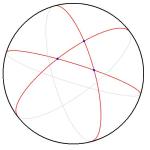Collaboration and sharing with virtual colleagues has become an invaluable part of my professional life. Like so many others, I turn to social media for teaching ideas, mathematical conversation, and a supportive and constructive space to reflect.
The extent to which this works continues to amaze me. And every now and then something happens that reminds me just how remarkable it is.
Recently, I received an email from an English teacher in my school whom I’d never met. Apparently this teacher had been using 12 Ways to Use the New York Times to Develop Math Literacy with her students all year, completely unaware of my connection to it! Only because we share a student in common were we ever made aware of our indirect collaboration.
Hopefully as tools and practices continue to grow and expand, the gap between the physical and the digital school will continue to close. Until then, there are sure to be many more amusing moments like this!


